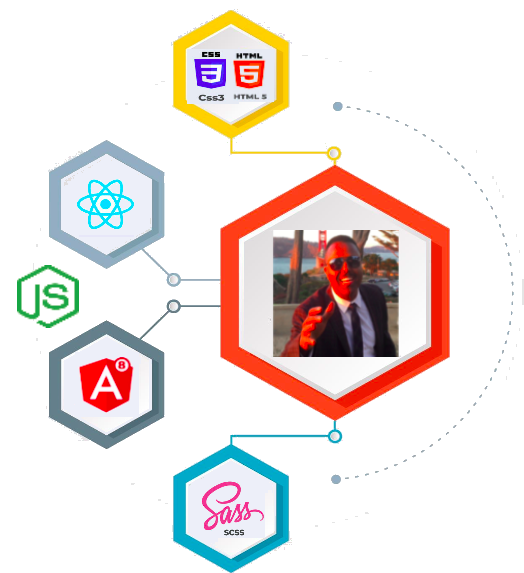
- Software Engineer, Product
- Modern Technology stacks:
- So What is a Tech Stack?
- Frontend tech stack
- Backend tech stack
- How to choose/build a tech stack
- What is a CI/CD Pipeline?
- Software Business Analyst
- Node.js Express Back-end Overview
- Build React App With Java Backend
- Connecting React-Frontend and NodeJS/Express Backend Applications
- React-Frontend, Node.js/Express-Backend, MySQL Architecture
- React Frontend with a NodeJS/Express Backend SQL-Architecture
- So What is git ?
- Git vs GitHub
- Big O Notation


How to choose the right tech stack for your application?

A tech stack encompasses various tools and technologies developers use to create applications. Such components include programming languages, storage systems, network protocols, and other devices. When working with multiple layers of the technology stack simultaneously, developers can more easily build robust applications that meet the needs of their end users.



What should I consider when choosing a tech stack?
There is no such thing as a uniformly effective tech stack. Different products and applications require different development tools. Time-tested technologies may not be right for the specific product or application your team is building, and new technologies might not have the needed functionality or support. Your focus should be on choosing technology that will improve the performance of your product or application — while allowing your engineering team to maintain the product's codebase and iterate faster. Take the following factors into consideration:Objectives and requirements
Start by considering your product vision and what functionality you will build to achieve that vision. For example, if your product or application processes large volumes of data, you need to prioritize technologies that process data quickly and cost-effectively. If you are building a stand-alone mobile app, your tech stack may be simpler - an iOS or Android app written in Objective-C/SWIFT or Java, for instance. It is important to evaluate technologies from both a strategic and technical viewpoint. If you choose a technology that does not truly meet your needs, you can end up with technical debt that may have been avoidable with better decision-making upfront.Team knowledge and upskilling
New frameworks or languages can appear to offer advantages, but your team may not have deep experience working with them. You will have to factor in the extra time it takes to learn the new technology. It can also be problematic if the new technology is untested and vulnerable to risk. But relying on outdated or ineffective technologies simply because team members have specific expertise can also compromise product quality.End-user experience and time to market
A customer's experience (and satisfaction) drives demand and keeps you in business. You want to identify technologies that provide a high-quality experience and also allow you to quickly launch product updates. Your ability to bring new experiences to customers can help generate faster feedback so you can improve the product.Cost
Consider the cost and overall value of the tech stack. Spending more money on ready-made tools may allow you to build your product more quickly but could come with tradeoffs if the tools are not as customizable as you need. Affordable technologies may have their own risks if they do not have the technical requirements you need. The right tech stack should minimize costs and bring more value in the long run because you are able to deliver a better product. Security Security is a significant factor for the business and your customers. But no tool is immune to security vulnerabilities — you have to discern the right balance of risks and benefits for your organization. A cutting-edge technology that allows you to ship quickly may be less battle-tested and more vulnerable. On the other hand, a battle-tested tool may better meet security needs but not allow you to iterate as quickly.Scalability
Can your tech stack scale both vertically and horizontally? Vertical scale allows you to add features on top of the product's core functionality. Horizontal scale allows you to handle a growing volume of users and activity. You may also want to look for third-party integrations that make it easier to add or extend features.Vendor support
If you anticipate needing vendor support or choosing enterprise tools, look for those that provide support. Can you reach the support team in the way you want — either by email, phone, or chat? If you ask a question, how quickly does their team respond? Many of the technologies in your tech stack will likely be open source. In that case, vendor support is not relevant. But you may want to explore whether the technology has a broad base of community support - an indication that the tool will continue to be maintained.The right tech stack for the organization
The process of choosing a tech stack can be fairly lengthy and overwhelming. It requires deep discussion with stakeholders, cross-functional planning, and practical hands-on experience. It can help to analyze what similar organizations or competitors are doing — without reflexively copying their stacks. A SWOT analysis can also be useful for evaluating your current stack or documenting a new technology's strengths, weaknesses, opportunities, and threats. Take time to thoroughly vet and plan a stack that works for your organization. What you select now will largely determine what you can build and the experiences you can provide. Ask plenty of questions to get at the essence of what the organization, engineering team, and customers need.

 Printer Friendly Version
Printer Friendly Version